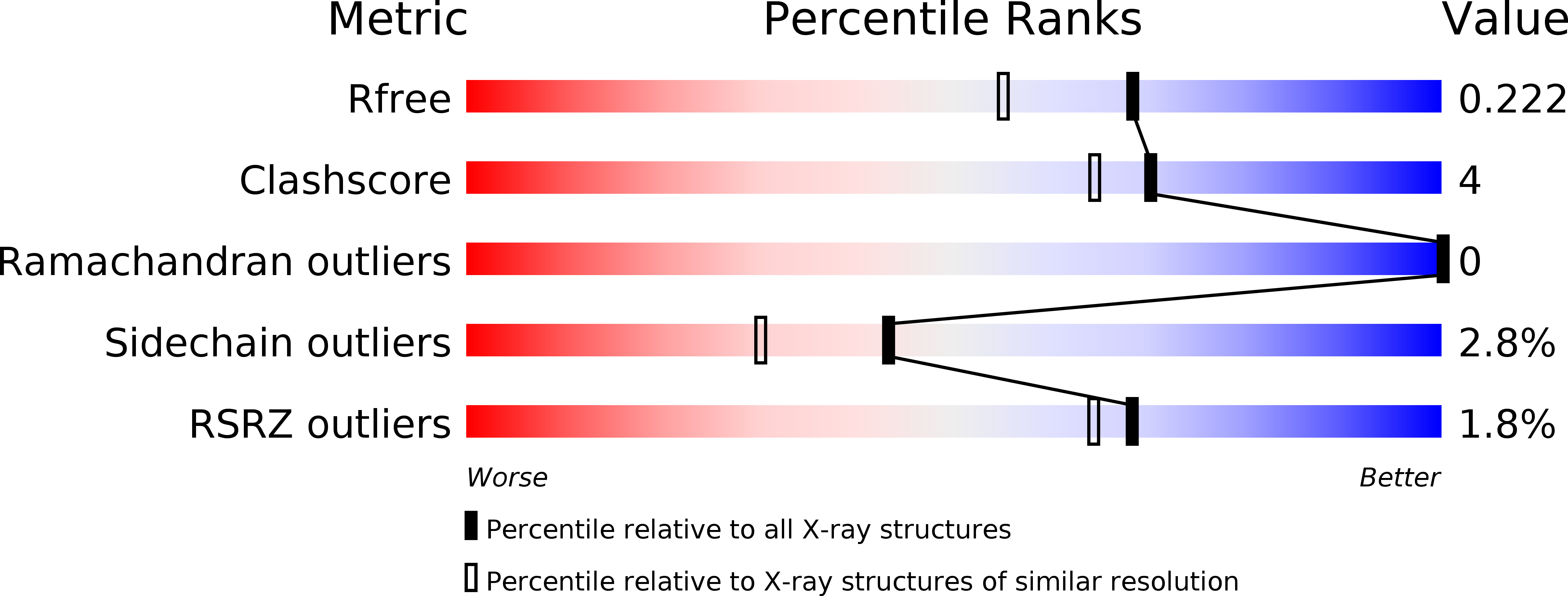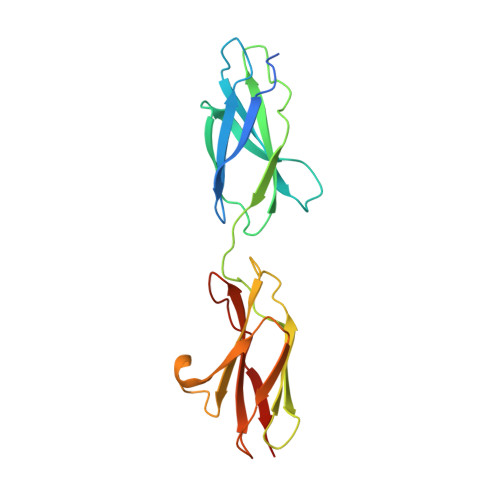Crystal and solution structures of fragments of the human leucocyte common antigen-related protein.
Vilstrup, J., Simonsen, A., Birkefeldt, T., Strandbygard, D., Lyngso, J., Pedersen, J.S., Thirup, S.(2020) Acta Crystallogr D Struct Biol 76: 406-417
- PubMed: 32355037
- DOI: https://doi.org/10.1107/S2059798320003885
- Primary Citation of Related Structures:
6TPT, 6TPU, 6TPV, 6TPW - PubMed Abstract:
Leucocyte common antigen-related protein (LAR) is a post-synaptic type I transmembrane receptor protein that is important for neuronal functionality and is genetically coupled to neuronal disorders such as attention deficit hyperactivity disorder (ADHD). To understand the molecular function of LAR, structural and biochemical studies of protein fragments derived from the ectodomain of human LAR have been performed. The crystal structure of a fragment encompassing the first four FNIII domains (LAR FN1-4 ) showed a characteristic L shape. SAXS data suggested limited flexibility within LAR FN1-4 , while rigid-body refinement of the SAXS data using the X-ray-derived atomic model showed a smaller angle between the domains defining the L shape compared with the crystal structure. The capabilities of the individual LAR fragments to interact with heparin was examined using microscale thermophoresis and heparin-affinity chromatography. The results showed that the three N-terminal immunoglobulin domains (LAR Ig1-3 ) and the four C-terminal FNIII domains (LAR FN5-8 ) both bound heparin, while LAR FN1-4 did not. The low-molecular-weight heparin drug Innohep induced a shift in hydrodynamic volume as assessed by size-exclusion chromatography of LAR Ig1-3 and LAR FN5-8 , while the chemically defined pentameric heparin drug Arixtra did not. Together, the presented results suggest the presence of an additional heparin-binding site in human LAR.
Organizational Affiliation:
Department of Molecular Biology and Genetics, Center for Structural Biology, Aarhus University, Gustav Wieds Vej 10C, 8000 Aarhus C, Denmark.















